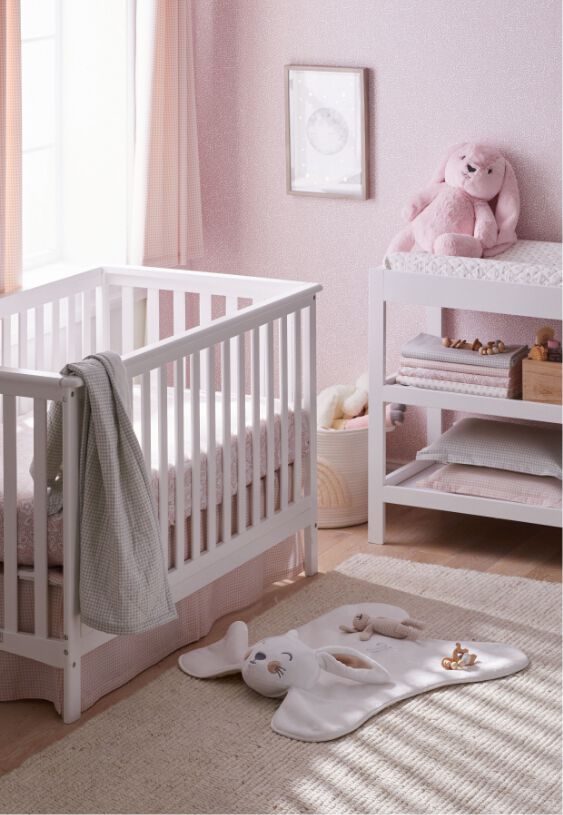Choosing Safe Crib Bedding for the Nursery
The safest sleeping environment for baby is an empty crib, but you can still design a beautiful space to bring them home. Choose crib bedding boasting pattern, color, or texture to create a safe—yet fashionable—sleeping area, then add other nursery decor elements to complete the look. Explore our guide to choosing crib bedding to learn the essential elements to include, then find tips for coordinating baby bedding and other linens for your nursery.
How to Layer a Safe Crib for Baby
When choosing bedding for the crib, the American Academy of Pediatrics recommends omitting anything that doesn’t fit tightly—this means you should skip any loose blankets, pillows, crib bumpers, or toys. Here’s what you can include:
1) Start With an Optional Crib Skirt
A crib skirt passes the test for safe baby bedding because it goes underneath the crib mattress, not on top of it. This piece is both practical and decorative, draping down to hide under-crib storage and complementing the aesthetic of the space. Choose a crib skirt that coordinates with the rest of your nursery decor—pick a crib skirt in the same pattern as your window treatments, or carry a common color through the crib skirt, sheets, curtains, and other nursery linens.
2) Choose a Quality Crib Mattress
Your primary concern when choosing a crib mattress should be safety: look for a supportive mattress that is more firm than soft. Most crib mattresses measure between 51 ⅝ and 53 inches in length, 27 ¼ and 28 inches in width, and between 4 and 6 inches deep—the one you choose should fit tightly against the edges of your crib for the safest sleep space for baby.
























